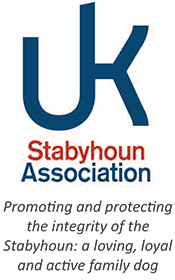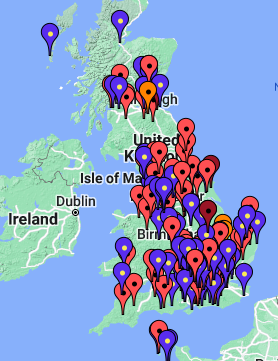In the UK and elsewhere, the Stabyhoun is a much-loved family pet which is owned and often bred by people who have never had a litter before. For those who have committed to help build and sustain the population, UKSA Breeding Advisor, Hannah Woods has put together this piece about the technicalities of mating, and the things to consider.
Requesting a Mating
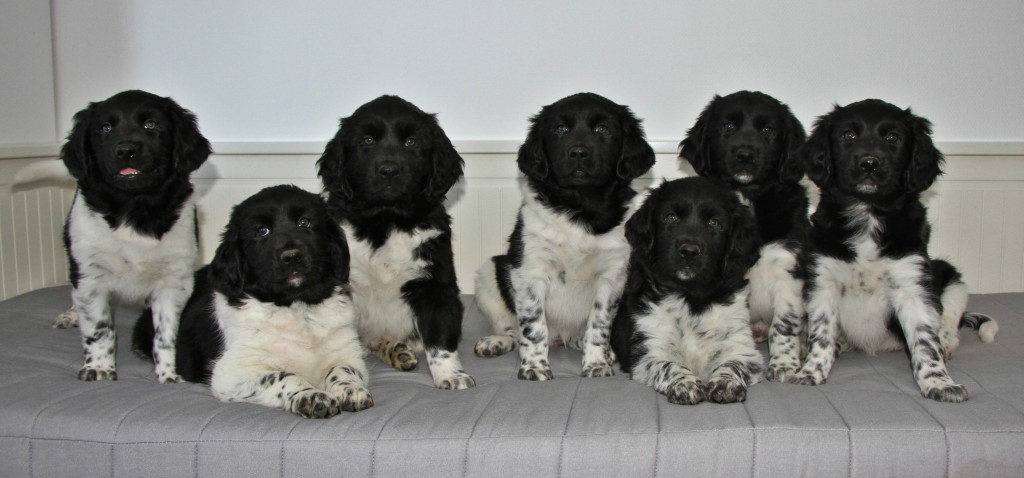 Finding the ideal match for your female can be time-consuming, but it is an important first step. So the key is to let the UKSA know that you’d like to breed around 6 months before your bitch comes into season. The UKSA Breeding Advisory Committee is dedicated to researching the best potential mating combinations – taking numerous factors into consideration such as the physical appearance of the dogs, their health record, hip scores and more.
Finding the ideal match for your female can be time-consuming, but it is an important first step. So the key is to let the UKSA know that you’d like to breed around 6 months before your bitch comes into season. The UKSA Breeding Advisory Committee is dedicated to researching the best potential mating combinations – taking numerous factors into consideration such as the physical appearance of the dogs, their health record, hip scores and more.
We will discuss various options with the owner of the female, before putting a formal request forward to the expert breeding panel at the Dutch Stabyhoun Association (NVSW). They may take weeks or months to consider the males we have suggested, as they also research and review the health and heritage in the lines of both dogs. It could be that the request is declined as new information about the health of our population emerges. The UKSA will then go back to the drawing board and start over.
Ultimately, it is the owner of the female who decides which male to use. The puppies will, after all, be their joy and responsibility. But if you are the owner of a stud dog in the UK, we will let you know if he is in the running for a mating.
It is our aim to promote UK stud dogs to our girls as a first option, then look abroad if options are limited. With some wonderful males imported to the UK and some born here, this makes sense for everyone. If the owner of the bitch has a particular interest in using a foreign dog, we take the opportunity to breed in new lines – there’s no point looking abroad for genes that we already have here in our handsome bunch!
After a mating has been approved
Once you have the green light for a mating, it’s time to prepare and agree the details with the owner of the male.
To start with, make sure you have each other’s contact details. You need to discuss plans for the mating and get all the eventualities ironed out before the big day. There’s so much going on once the bitch gets into season, that you’ll be glad you had already thought about everything.
Things to discuss in particular are:
- Stud fees: Typically, this is the price of a puppy in the UK. However, the owner of the male ultimately decides how much to charge, and the owner of the female decides if they are happy with the price, and any particulars of the agreement. For example, some charge a lower price for the mating and then a price per live puppy that is born (e.g. £500 for the mating and £100 per live puppy). Some charge half the fee at the mating and the other half when the bitch is confirmed pregnant. The list goes on! The UKSA is at all times happy to discuss the options and advise both owners. In the end, breeding can be a costly business and there are never any guarantees but try to be as fair as possible.
- Logistics: Traditionally the bitch comes to the dog, for a mating on his home turf. Dogs tend to feel more confident and sure of themselves in their home environment. However, some would rather take their dog to the bitch, or even meet up on neutral ground (if the dogs live far apart, this might be particularly relevant). At this point, you also need to discuss availability. The nature of breeding will be that it’s going to be last minute! Having a contingency in place with someone to help if for any reason the owner of the male is not available (on holiday/at work) is a really good idea. Bear in mind that bitches only come into season a few times each year, and most owners have made plans to raise a litter at a given time. So as the owner of the stud dog, your job is to make sure your boy is made available or he is unlikely to be requested again.
- Method of mating: More on this below, but it’s vital to know where you both stand on Artificial Insemination, should a natural mating not be successful. At the bottom of this page you will find a list of recognised fertility clinics in theUK.
- If the mating is unsuccessful: Discuss and agree what will happen if no puppies result from the mating/insemination. It may be that the bitch owner gets to try as many times as they wish with that male, that half the stud fee is refunded and so on.
Breeding Mechanics – What to expect!
Professional progesterone tests done by a vet experienced in this area is essential to determine the ideal time to mate your dogs which is at the time or shortly after she has ovulated (she can’t get pregnant before this point). Most people do the first test around day 5-8 and then every few days after that. Knowing exactly when she’s expected to be fertile means you can introduce her to the male at the point where she should be receptive. Too soon and she might reject him – something that can put off young and inexperienced maes. Too late and, well… no puppies. The UKSA board members are all here for advice and moral support when you’re working out dates!
Natural Mating
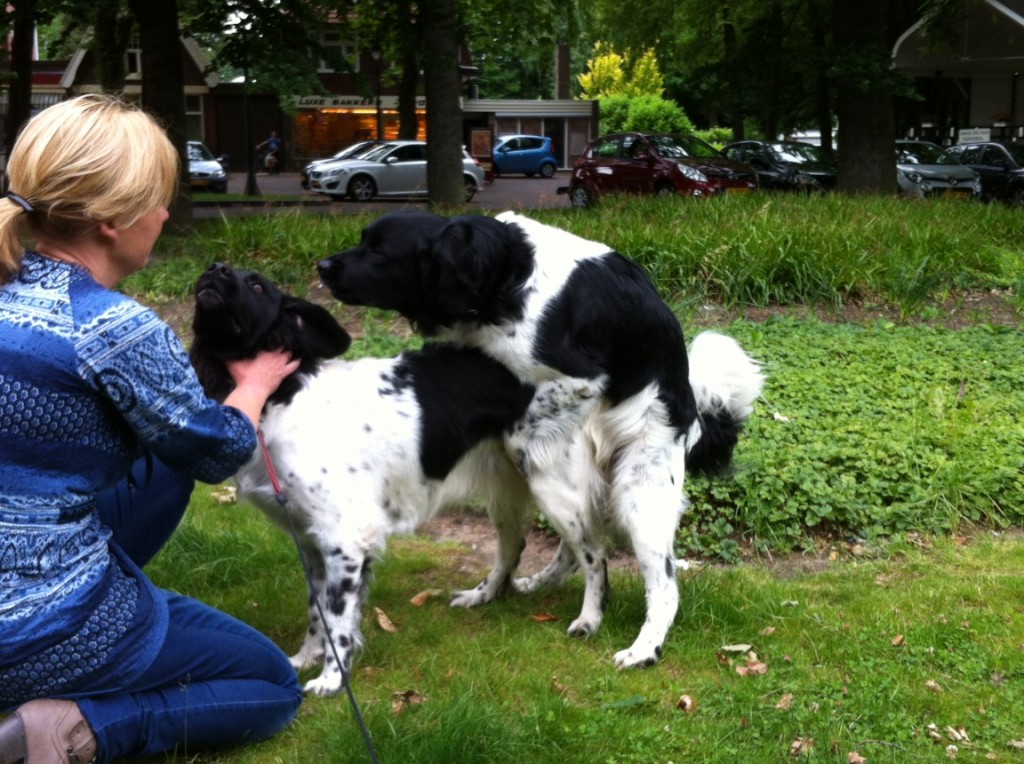 Most owners like to introduce the dogs for a mating outside, if possible, as it’s less messy! You need to be in a secure area, where there’s no danger of either dog escaping and where there are no distrations. You will notice the words ‘might’ and ‘may’ used a lot – because every mating is different. But don’t have the entire family present – just one owner for each dog and, if possible, a representative from the UKSA to help.
Most owners like to introduce the dogs for a mating outside, if possible, as it’s less messy! You need to be in a secure area, where there’s no danger of either dog escaping and where there are no distrations. You will notice the words ‘might’ and ‘may’ used a lot – because every mating is different. But don’t have the entire family present – just one owner for each dog and, if possible, a representative from the UKSA to help.
Both dogs should be allowed time to get comfortable with each other. They will often play and flirt, the male will mark around the area, sniff her and lick her, he may try and play exuberantly, stand next to her, put a paw on her back etc. This is all normal behaviour; the male is testing out whether she will accept him or not. A girl who is ready will generally play for a bit and then stand like a rock, often moving her rear in his direction, and lift or ‘flag’ her tail at his attention. Even bitches who usually don’t like a lot of attention from other dogs will usually stand and flirt with a male once she has got used to him AND the timing is right. A bitch who isn’t ready will spin and snap and growl, and generally be very defensive, even as time goes on.
Click here to watch two Stabyhoun mate naturally
Once he’s sure she’s accepting, he will then make attempts to mount and mate. This may happen after 5 minutes, it may be half an hour; there’s no need to rush him. He will usually try a few ‘trial runs’ of mounting and thrusting before committing. This is where things can be a bit tricky with first timers – he may exert himself on parts of her anatomy that are quite useless! A bit of guidance towards the right end may be necessary, or she might get fed up with him working on her right ear! A male who has mated before will usually get right on target, but it’s absolutely fine to lend a hand – in fact, it might be necessary.
A virgin female might get a bit anxious as he pokes about. It’s not uncommon for her to yelp or squeal as he tries to find where to go – guaranteed it’s not painful for her, but she can get a bit startled. If she’s unsure, it’s a good idea to hold her back end still to make things easier for him. To minimise the time spent poking about he may need some manual guidance, once he’s in and committed. The actual mating is very brief, lasting often no more than a minute. Once he is done, the next phase is called ‘the tie’.

Mieke and Abe in a tie
After ejaculation, he is ‘tied’ inside whilst prostatic fluid flushes through. Generally he will dismount, whilst still inside, swing a hind leg over her back and then stand end to end until released. It can take anything from a couple of minutes to over half an hour, though 15-20 mins is typical. The duration of the tie is not an indicator of how successful the mating was. A mating without a tie can still produce puppies. First time females may be startled at first by the tie, though it’s unusual. Again it is not painful for them, but it’s a new sensation. It’s important to make sure that she stays still so as not to injure the male, although it’s very rare that it happens. Therefore, it’s essential to keep hold of both dogs for the duration of the tie. Some might try and wander off if they get bored, or lie down, or even play!
Once he releases, the mating over. It’s advisable not to let the girl urinate for at least half an hour after. She will be tired, so put her away somewhere quiet.
And that’s a natural mating. You may choose to attempt a repeat mating a day or two later – depending on what the progesterone numbers say – just to be sure!
If there are problems…
Despite doing everything right, you might find that two dogs (especially if both are first timers) just don’t seem to get there. The bitch may be awkward and a bit squealy, the dog may just not be able to get his head around what he’s supposed to do – or both!
If it’s been more than an hour, take a break, separate the dogs and have a cup of tea! Give them time to rest (a lot of energy is expended in the excitement), regroup and try again. This is where progesterone testing comes into its own…you KNOW she’s ready, so it rules out the possibility that she’s there at the wrong time. If it still doesn’t happen, you might choose to come back the next day, maybe in a different environment. At this point, it’s time to think about other options if the mating still isn’t successful (and you will, of course, have considered, discussed and agreed the details beforehand)…
A little help never hurt – Artificial Insemination
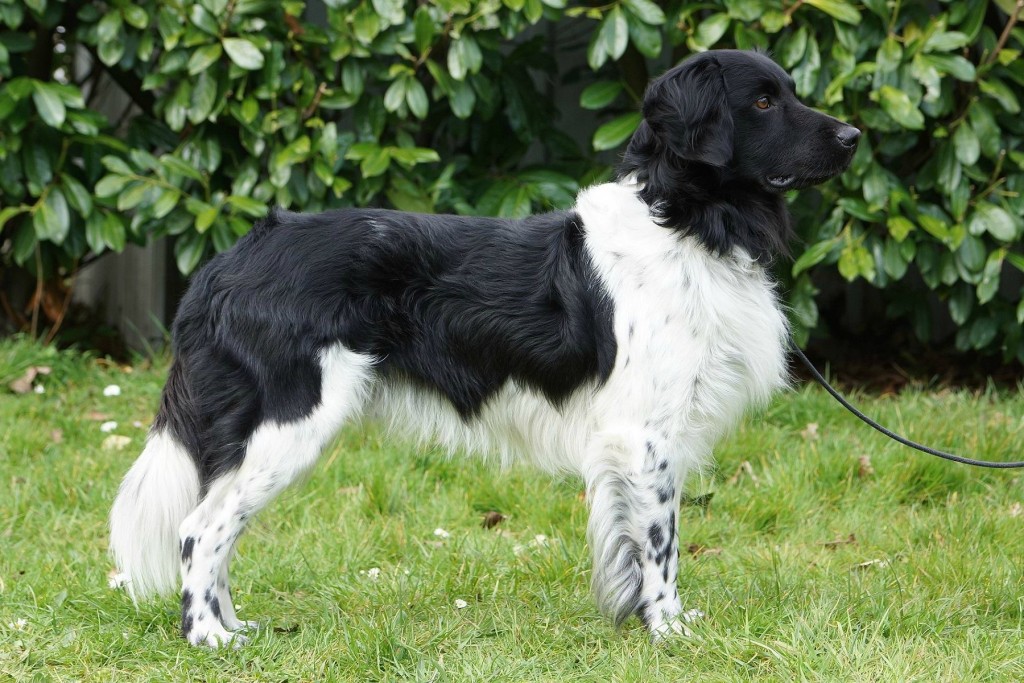 People tend to think that dogs always manage to mate naturally. But this is far from the case. The UK Kennel Club has very strict rules regarding Artificial Insemination (AI) but we follow the rules of the Dutch Kennel Klub which are (we think) far more sensible. AI is a technique that is used extensively in other animals, with great success. It’s also often used by the Guide Dog Association and Police Dogs. As part of the Stabyhoun community, we too have unrestricted access to this method of reproduction which is invaluable in such a small breed where stud dogs may be in a different country, and where every single animal counts.
People tend to think that dogs always manage to mate naturally. But this is far from the case. The UK Kennel Club has very strict rules regarding Artificial Insemination (AI) but we follow the rules of the Dutch Kennel Klub which are (we think) far more sensible. AI is a technique that is used extensively in other animals, with great success. It’s also often used by the Guide Dog Association and Police Dogs. As part of the Stabyhoun community, we too have unrestricted access to this method of reproduction which is invaluable in such a small breed where stud dogs may be in a different country, and where every single animal counts.
The collection from the dog is a very simple process and not at all stressful. If the breeding bitch isn’t present to get him excited, he will usually be introduced to another female. She might not be in heat but have a pheromone sprayed on her to arouse him. Once he begins to mount it is a simple case of redirection!
The collected sample will be analysed for motility and quality, and if it’s a simple side-to-side insemination, will be inseminated straight into the bitch. There are two methods:
- Transvaginal – the semen is deposited in the vagina, and a tie is simulated to encourage the bitch to accept the semen.
- Transcervical – the semen is deposited into the uterus just inside the cervix. The bitch tolerates this extremely well, and will usually stand perfectly still. Some bitches who get stressed easily may benefit from a light sedation, but it’s very rarely necessary. This form of insemination is typically used with chilled semen, or if the bitch is coming to the end of her fertile period.
Although some vets recommend a Transvaginal insemination with fresh semen, the UKSA has had greater success with the Transcervical method. Either way, make sure you keep your chosen fertility clinic up to date on your progress and that they know you might be calling at short notice in case a natural mating isn’t successful. AI does take some time and it would be a shame to miss out because an appointment wasn’t available at the right time.
Shipping Semen
In the world of the Stabyhoun, stud services are requested internationally on a regular basis. Our dogs are on the international stud list, and though we are unlikely to get a request from the Netherlands (not impossible, they just already have a good choice of males!) there are other countries who need to import semen for breeding, just as we do.
If you have your boy singled out as a desirable match for a foreign female, the owner of the female will likely get in touch before making an application, to see if you are open to having a collection and shipment done. Again, there are a couple of things to discuss in advance:
- Stud fee: This is again an agreement between the two owners, including how and when payment should be made and who pays for the collection. Some stud dog owners are happy to reduce the standard fee to get their dog used abroad – taking into account the extra costs involved of collecting, shipping and inseminating the female.
- Logistics: The fertility clinics usually organise the shipping and packaging of the sample but make sure the vets in both ends have experience with the paperwork required by the receiving country. As a stud owner, you may be called on fairly last minute, so it’s essential to be on standby and ready to travel to the clinic. The owner of the female may request more than one sample, depending on whether they are doing one or two inseminations, or if something happens to the first. All of it should be considered and planned for.
It’s a great honour to have your dogs’ services requested abroad, and we do encourage all stud dog owners to be open to doing it. t benefits the worldwide population, and it’s something special to have the progeny of your dog contributing to the breed in another country!
If you have any questions that have not been answered, please don’t hesitate to contact us!




